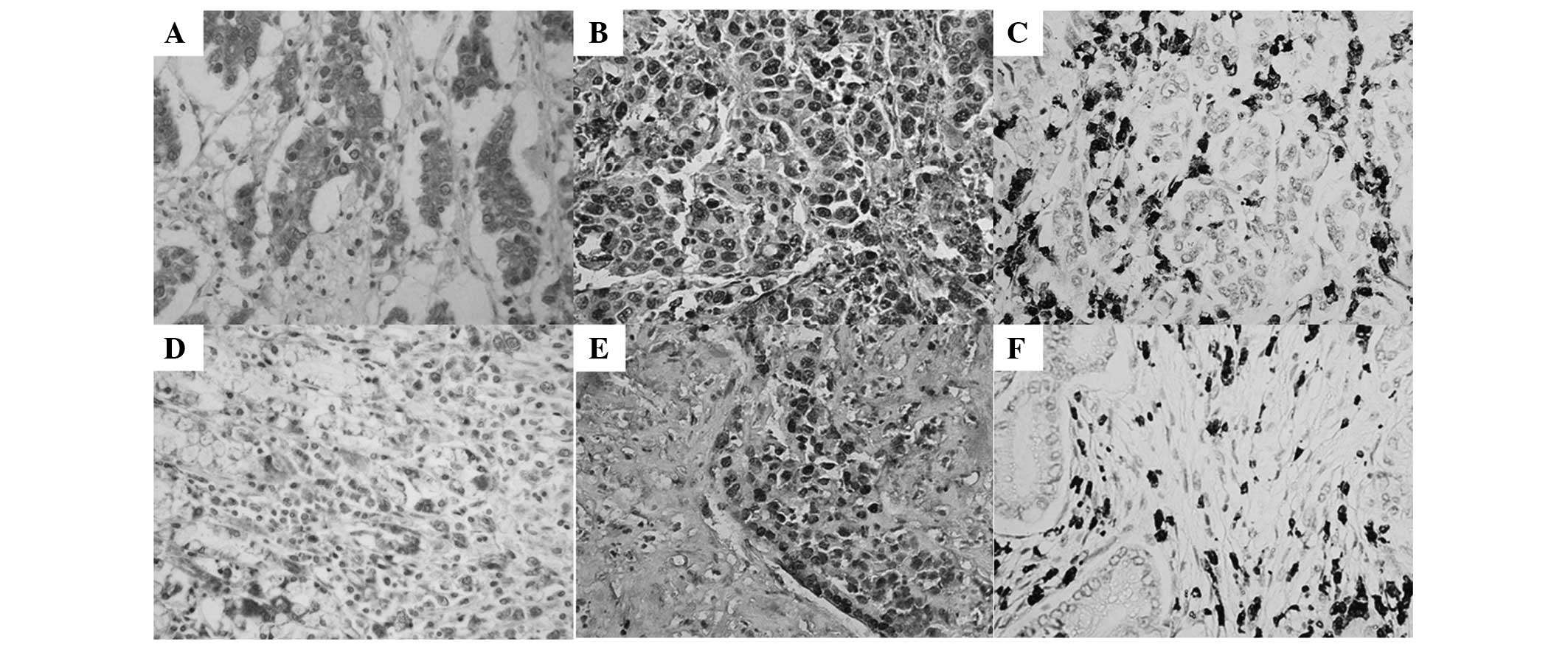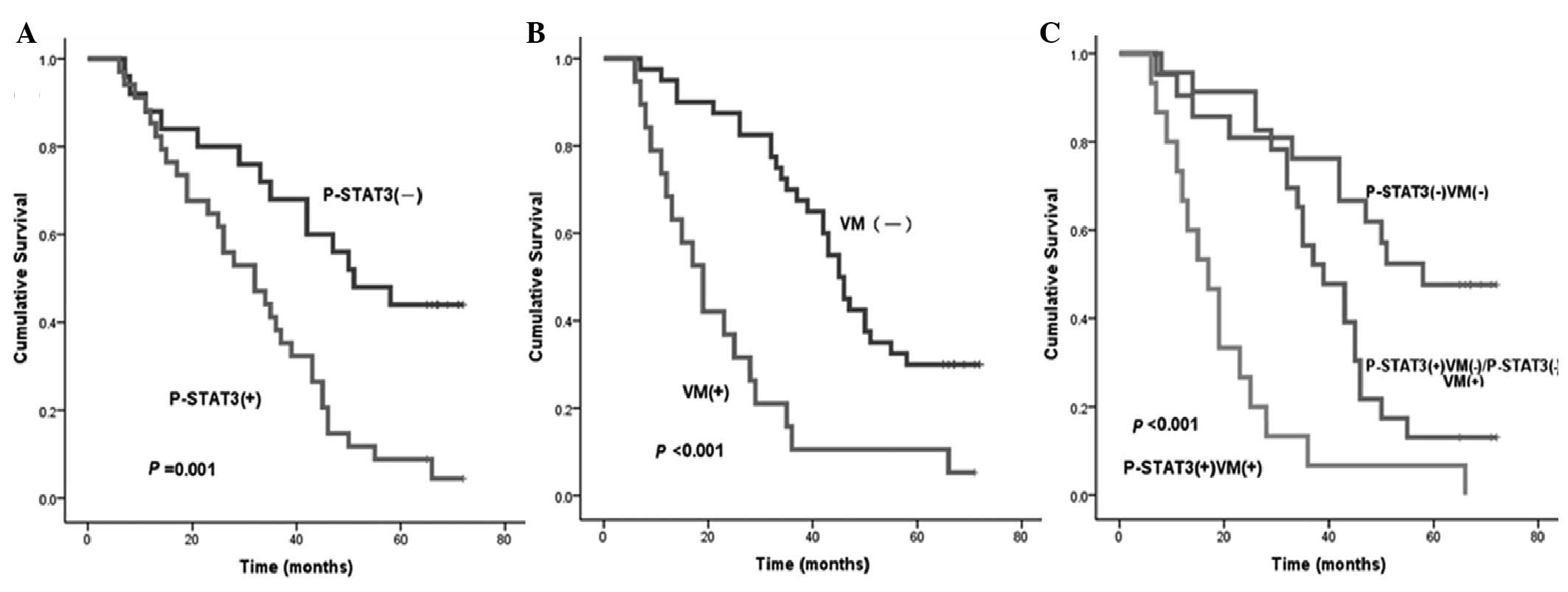STAT3, p‑STAT3 and HIF‑1α are associated with vasculogenic mimicry and impact on survival in gastric adenocarcinoma
- Authors:
- Published online on: April 11, 2014 https://doi.org/10.3892/ol.2014.2059
- Pages: 431-437
Metrics:
Total
Views: 0 (Spandidos Publications: | PMC Statistics:
)
Total PDF Downloads: 0 (Spandidos Publications: | PMC Statistics:
)
Abstract
Vasculogenic mimicry (VM) formation is important for invasion and metastasis of tumor cells in gastric adenocarcinoma (GAC). The present study aimed to investigate the association between signal transducer and activator of transcription‑3 (STAT3), phosphor‑STAT3 (p‑STAT3), hypoxia‑inducible factor‑1α (HIF‑1α) and VM formation in GAC, and discuss their clinical significance and correlation with the prognosis of patients with GAC. The expression levels of STAT3, p‑STAT3, HIF‑1α and VM were assessed in 60 cases of patients with GAC and 20 cases of patients with gastritis on tissue microarrays by immunohistochemical methods. The expression levels of STAT3, p‑STAT3, HIF‑1α and VM were higher in patients with GAC (particularly in poorly differentiated GAC) than in those with gastritis (P<0.05). The expression levels of STAT3, p‑STAT3 and HIF‑1α were higher in VM tissues compared with non‑VM tissues (P<0.05). Positive correlations existed between STAT3, p‑STAT3, HIF‑1α and VM expression (P<0.05). The expression levels of STAT3, p‑STAT3 and HIF‑1α, VM, status of lymph node metastasis and tumor differentiation degree were associated with the overall survival time of patients with GAC (P<0.05). However, only p‑STAT3 and VM expression were identified as the independent risk factors of GAC OS when analyzed with multivariate analysis. p‑STAT3 and VM play a significant role in indicating the prognosis of patients with GAC. STAT3 activation may play a positive role in VM formation of GAC by the STAT3‑p‑STAT3‑HIF‑1α‑VM effect axis.













